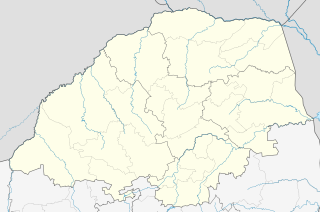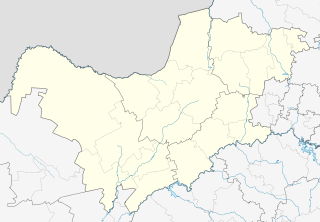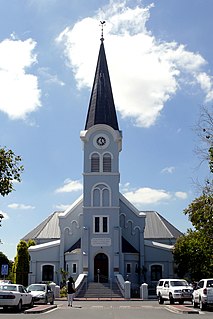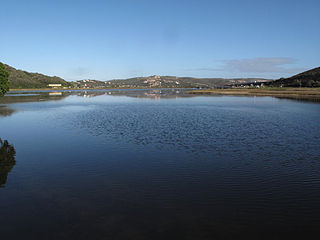Krakeel River Krakeelrivier | |
|---|---|
| Coordinates: 33°48′50″S23°43′55″E / 33.814°S 23.732°E Coordinates: 33°48′50″S23°43′55″E / 33.814°S 23.732°E | |
| Country | South Africa |
| Province | Eastern Cape |
| District | Sarah Baartman |
| Municipality | Kou-Kamma |
| Area | |
| • Total | 1.06 km2 (0.41 sq mi) |
| Population (2011) [1] | |
| • Total | 1,931 |
| • Density | 1,800/km2 (4,700/sq mi) |
| Racial makeup (2011) | |
| • Black African | 13.2% |
| • Coloured | 78.1% |
| • Indian/Asian | 1.1% |
| • White | 6.7% |
| • Other | 0.8% |
| First languages (2011) | |
| • Afrikaans | 89.5% |
| • Xhosa | 6.3% |
| • English | 2.3% |
| • Other | 1.8% |
| Time zone | UTC+2 (SAST) |
| PO box | 6430 |
Krakeel River is a town in Sarah Baartman District Municipality in the Eastern Cape province of South Africa.
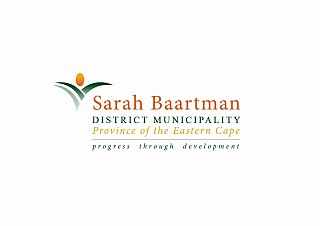
Sarah Baartman District Municipality is situated in the western part of the Eastern Cape province, covering an area of 58 242 square kilometres. The area of the district municipality includes nine local municipalities. The seat of Sarah Baartman is the city of Port Elizabeth, although Port Elizabeth is not itself in the district. The largest languages among the 388,201 people are Xhosa and Afrikaans.. The district code is DC10.

The Eastern Cape is a province of South Africa. Its capital is Bhisho, but its two largest cities are Port Elizabeth and East London. It was formed in 1994 out of the Xhosa homelands or bantustans of Transkei and Ciskei, together with the eastern portion of the Cape Province. It is the landing place and home of the 1820 Settlers. The central and eastern part of the province is the traditional home of the Xhosa people.

South Africa, officially the Republic of South Africa (RSA), is the southernmost country in Africa. It is bounded to the south by 2,798 kilometres (1,739 mi) of coastline of Southern Africa stretching along the South Atlantic and Indian Oceans; to the north by the neighbouring countries of Namibia, Botswana, and Zimbabwe; and to the east and northeast by Mozambique and Eswatini (Swaziland); and it surrounds the enclaved country of Lesotho. South Africa is the largest country in Southern Africa and the 25th-largest country in the world by land area and, with over 57 million people, is the world's 24th-most populous nation. It is the southernmost country on the mainland of the Old World or the Eastern Hemisphere. About 80 percent of South Africans are of Sub-Saharan African ancestry, divided among a variety of ethnic groups speaking different African languages, nine of which have official status. The remaining population consists of Africa's largest communities of European (White), Asian (Indian), and multiracial (Coloured) ancestry.
Village in the Langkloof, east of Avontuur and some 200 km from Port Elizabeth. The name is taken from that of the river. The form Krakeelrivier is preferred for official purposes. [2]

The Langkloof is a 160 km long valley in South Africa, lying between Herold, a small village northeast of George, and The Heights - just beyond Twee Riviere. The kloof was given its name by Isaq Schrijver in 1689, and more thoroughly explored by a later expedition under ensign August Frederik Beutler in 1752.

Avontuur is a town situated in the Garden Route District Municipality in the Western Cape province of South Africa. The town is located 13km south-east of Uniondale on an intersection of the R339 and R62 regional routes. The name is Afrikaans for adventure; its origin, however, remains uncertain. The river from which the town takes its name was known in 1778.

Port Elizabeth or The Bay is one of the major cities in South Africa; it is situated in the Eastern Cape Province, 770 km (478 mi) east of Cape Town. The city, often shortened to PE and nicknamed "The Windy City", stretches for 16 km along Algoa Bay, and is one of the major seaports in South Africa. Port Elizabeth is the southernmost large city on the African continent, just farther south than Cape Town. Port Elizabeth was founded as a town in 1820 to house British settlers as a way of strengthening the border region between the Cape Colony and the Xhosa. It now forms part of the Nelson Mandela Bay Metropolitan Municipality, which has a population of over 1.3 million.









